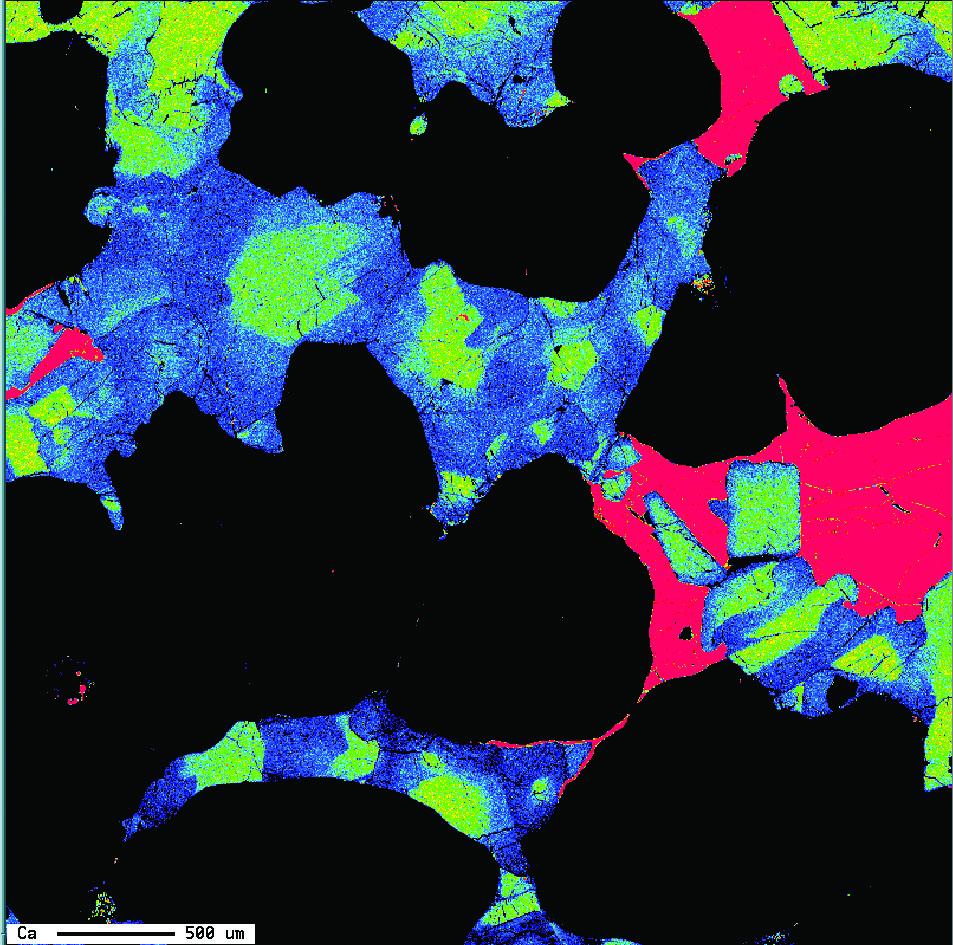Research Roundup: new findings on crystallization in magmatic systems published in Nature Geoscience
Research and impact 30 April 2020
New findings from researchers at the University of Manchester, in conjunction with collaborators at Keele University, Durham University and University College Dublin, Ireland, suggest that precious metal mineralisation may form very rapidly in sub-volcanic magmatic systems, and that the concept of crustal magma chambers may need to be re-evaluated. Dr Brian O’Driscoll from Earth and Environmental Sciences at the University of Manchester was a co-author of the published paper.
‘Rapid crystallization of precious-metal-mineralized layers in mafic magmatic systems’ can be read in Nature Geoscience.

View east toward Hallival (left) and Askival (right) on the Isle of Rum, NW Scotland. The Rum layered intrusion forms the central mountainous part of the island, including these peaks, and is 60 million years old.

Chemical element map showing the distribution of calcium in a sample of interest from Rum. The blue and green coloured material is all plagioclase, and the different colours indicate the significant and complex chemical disequilibrium in this mineral.
Article Abstract
The solidified remnants of mafic magmatic systems host the greatest concentrations of platinum-group metals in the Earth’s crust. Our understanding of precious-metal mineralization in these intrusive bodies is underpinned by a traditional view of magma chamber processes and crystal mush solidification. However, considerable uncertainty remains regarding the physical and temporal controls on concentrating these critical metals, despite their importance to modern society. We present high-precision 87Sr/86Sr analyses of plagioclase and clinopyroxene from within centimetre-thick precious-metal-enriched layers in the Palaeogene open-system Rum layered intrusion (northwest Scotland). Isotopic heterogeneity is present between plagioclase crystals, between clinopyroxene and plagioclase and within plagioclase crystals throughout the studied section. On the basis of these observations, we demonstrate that platinum-group element mineralization formed by repeated small-volume reactive melt percolation events. The preservation of strontium isotope heterogeneities at 10–100 µm length scales implies cooling of the melts that formed the precious-metal-rich layers occurred at rates greater than 1 °C per year, and cooling to diffusive closure within tens to hundreds of years. Our data highlight the importance of cyclic dissolution–recrystallization events within the crystal mush and raise the prospect that precious-metal-bearing mafic intrusions may form by repeated self-intrusion during cooling and solidification.

Photomicrograph in crossed polars of precious-metal bearing peridotite. Note the optical zoning (light/dark bands) in the plagioclase (grey coloured mineral) in the central part of the image. The occurrence of this zoning was the focus of the study in question. The width of image frame is 4 mm.
Hepworth, L.N., Daly, J.S., Gertisser, R., Johnson, C.G., Emeleus, C.H., O’Driscoll, B. Rapid crystallization of precious-metal-mineralized layers in mafic magmatic systems. Nat. Geosci. (2020). https://doi.org/10.1038/s41561-020-0568-3
calciumclinopyroxenecrystallizationinstrusive bodiesisotopesmafic magmatic systemsmagmatic chambersmineralNature Geoscienceplagioclase crystalsplatinumprecious metalreactive melt percolationRumsolidification

Leave a Reply